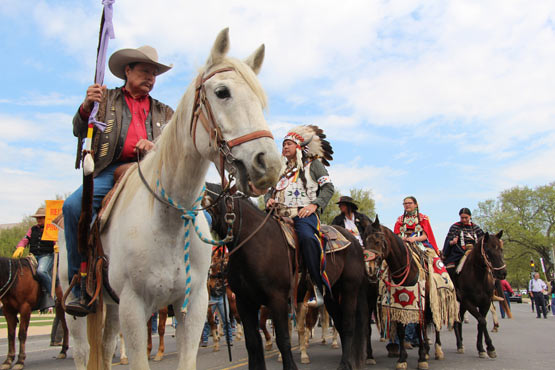
Last week, members of the Cowboy Indian Alliance—a coalition of tribal members, ranchers, and landowners from the Great Plains—camped out on the National Mall in Washington, D.C., united in one cause: opposition to the Keystone XL pipeline.
Finding common cause over protection of clean water and a mistrust of the Canadian pipeline company Transcanada, they came to meet with elected officials, connect with allies, and strengthen relationships with one another. Some, like Texas landowner Lori Collins, already have the completed portion of the pipeline running through their fields. Others who live along the path of the northern segment, which is yet to be approved, hope that a strategic partnership between natives and settlers will help prevent the same thing from happening to them.
Last Friday, President Obama announced another delay to the project. While some are frustrated by the lack of leadership, others see it as a reason to hope. As one rancher told me this morning, “Every day is a victory.”
All photographs by Kristin Moe.
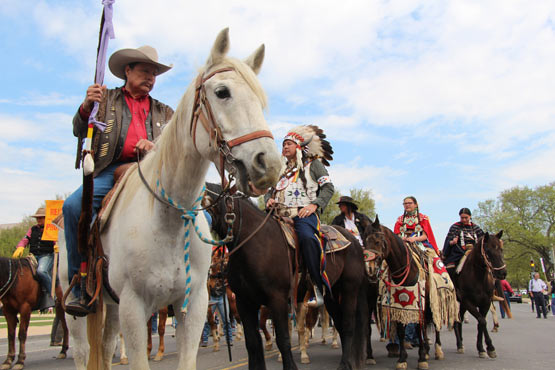 The indigenous contingent of the Cowboy and Indian Alliance lines up for the opening ceremony.
The indigenous contingent of the Cowboy and Indian Alliance lines up for the opening ceremony.
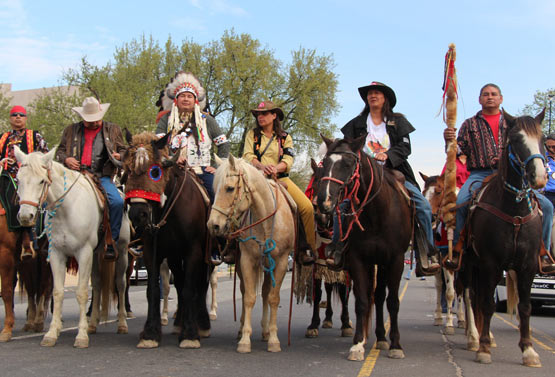 Indigenous members of the Cowboy Indian Alliance in front of the U.S. Capitol.
Indigenous members of the Cowboy Indian Alliance in front of the U.S. Capitol.
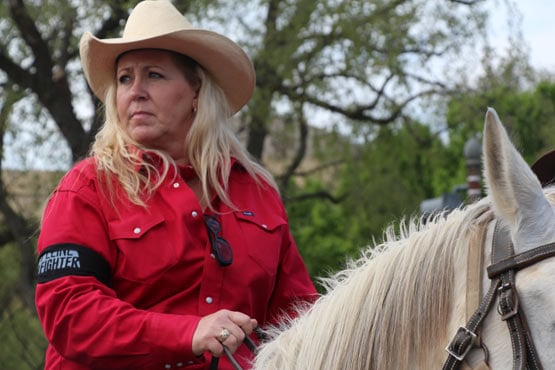 Lori Collins from Lake Creek, Texas. The southern leg of Keystone XL, which began operating earlier this year, crosses her land.
Lori Collins from Lake Creek, Texas. The southern leg of Keystone XL, which began operating earlier this year, crosses her land.
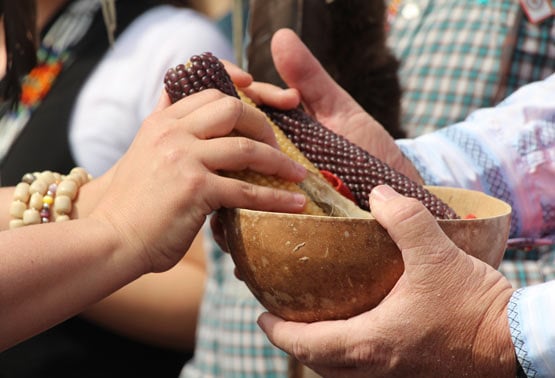 Participants exchange gifts at the opening ceremony, welcoming visitors to Piscataway traditional territory.
Participants exchange gifts at the opening ceremony, welcoming visitors to Piscataway traditional territory.
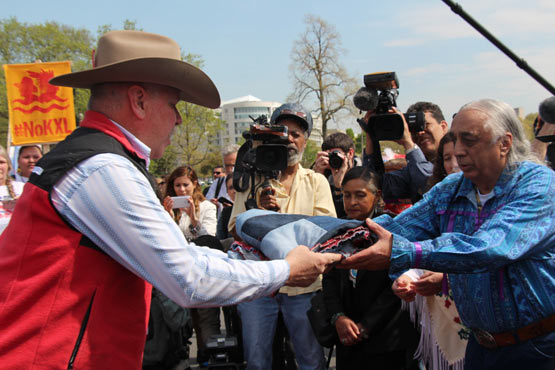 Nebraska landowner Bob Allpress presents a gift to Chief Billy “Red Wing” Tayac of the Piscataway nation. Washington, D.C., was originally Piscataway territory.
Nebraska landowner Bob Allpress presents a gift to Chief Billy “Red Wing” Tayac of the Piscataway nation. Washington, D.C., was originally Piscataway territory.
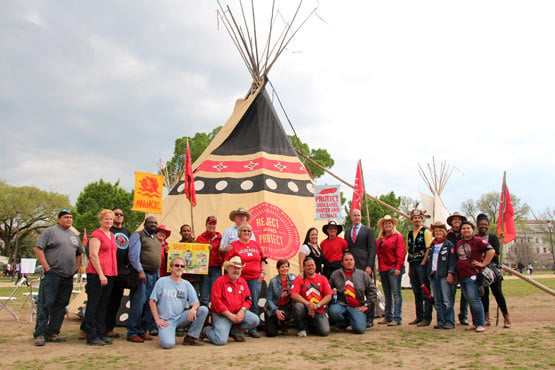 Sierra Club Executive Director Mike Brune (near center, in suit), joins members of the Cowboy and Indian Alliance at their camp.
Sierra Club Executive Director Mike Brune (near center, in suit), joins members of the Cowboy and Indian Alliance at their camp.
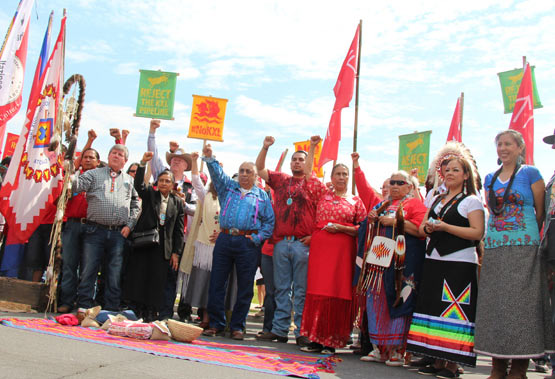 Indigenous members of the Cowboy Indian Alliance demonstrate in front of the U.S. Capitol.
Indigenous members of the Cowboy Indian Alliance demonstrate in front of the U.S. Capitol.
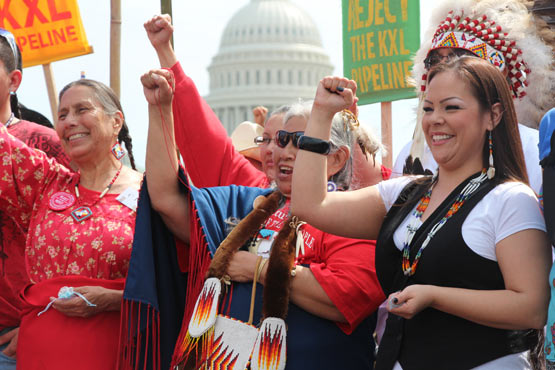 Cowboy and Indian Alliance leaders Casey Camp Horinek (at left) and Faith Spotted Eagle (second from left, in sunglasses) join Crystal Lameman (at right) from the Beaver Lake Cree First Nation in Alberta, Canada. Together, they represent tribes from regions all along the path of Keystone XL.
Cowboy and Indian Alliance leaders Casey Camp Horinek (at left) and Faith Spotted Eagle (second from left, in sunglasses) join Crystal Lameman (at right) from the Beaver Lake Cree First Nation in Alberta, Canada. Together, they represent tribes from regions all along the path of Keystone XL.
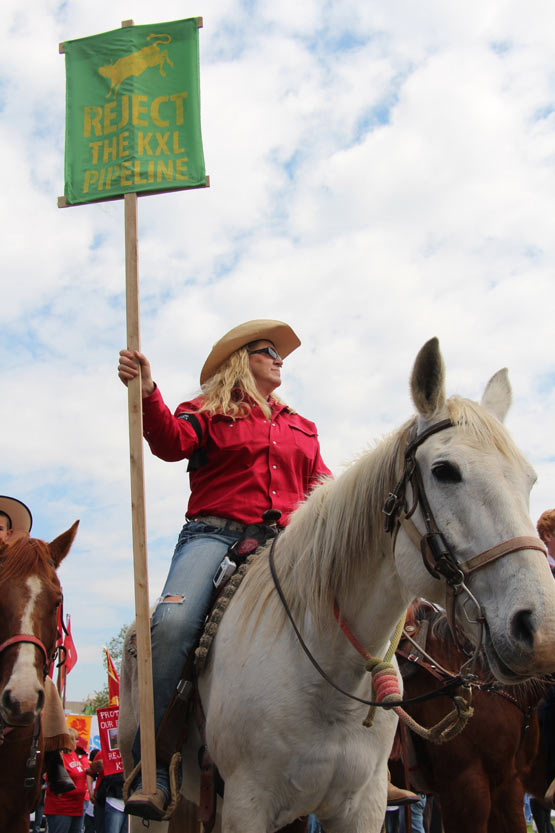 Lori Collins from Lake Creek, Texas.
Lori Collins from Lake Creek, Texas.
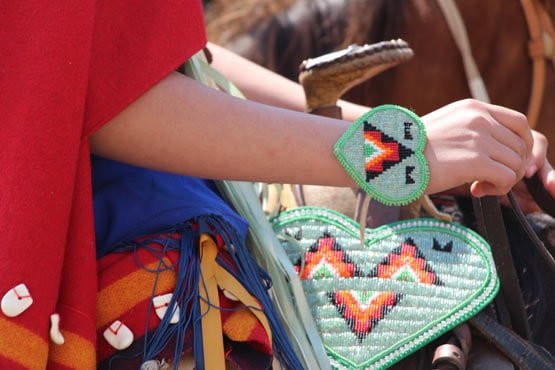 Beadwork on a rider’s traditional costume.
Beadwork on a rider’s traditional costume.
Our most important fundraising appeal of the year
December is the most critical time of year for Truthout, because our nonprofit news is funded almost entirely by individual donations from readers like you. So before you navigate away, we ask that you take just a second to support Truthout with a tax-deductible donation.
This year is a little different. We are up against a far-reaching, wide-scale attack on press freedom coming from the Trump administration. 2025 was a year of frightening censorship, news industry corporate consolidation, and worsening financial conditions for progressive nonprofits across the board.
We can only resist Trump’s agenda by cultivating a strong base of support. The right-wing mediasphere is funded comfortably by billionaire owners and venture capitalist philanthropists. At Truthout, we have you.
We’ve set an ambitious target for our year-end campaign — a goal of $180,000 to keep up our fight against authoritarianism in 2026. Please take a meaningful action in this fight: make a one-time or monthly donation to Truthout before December 31. If you have the means, please dig deep.